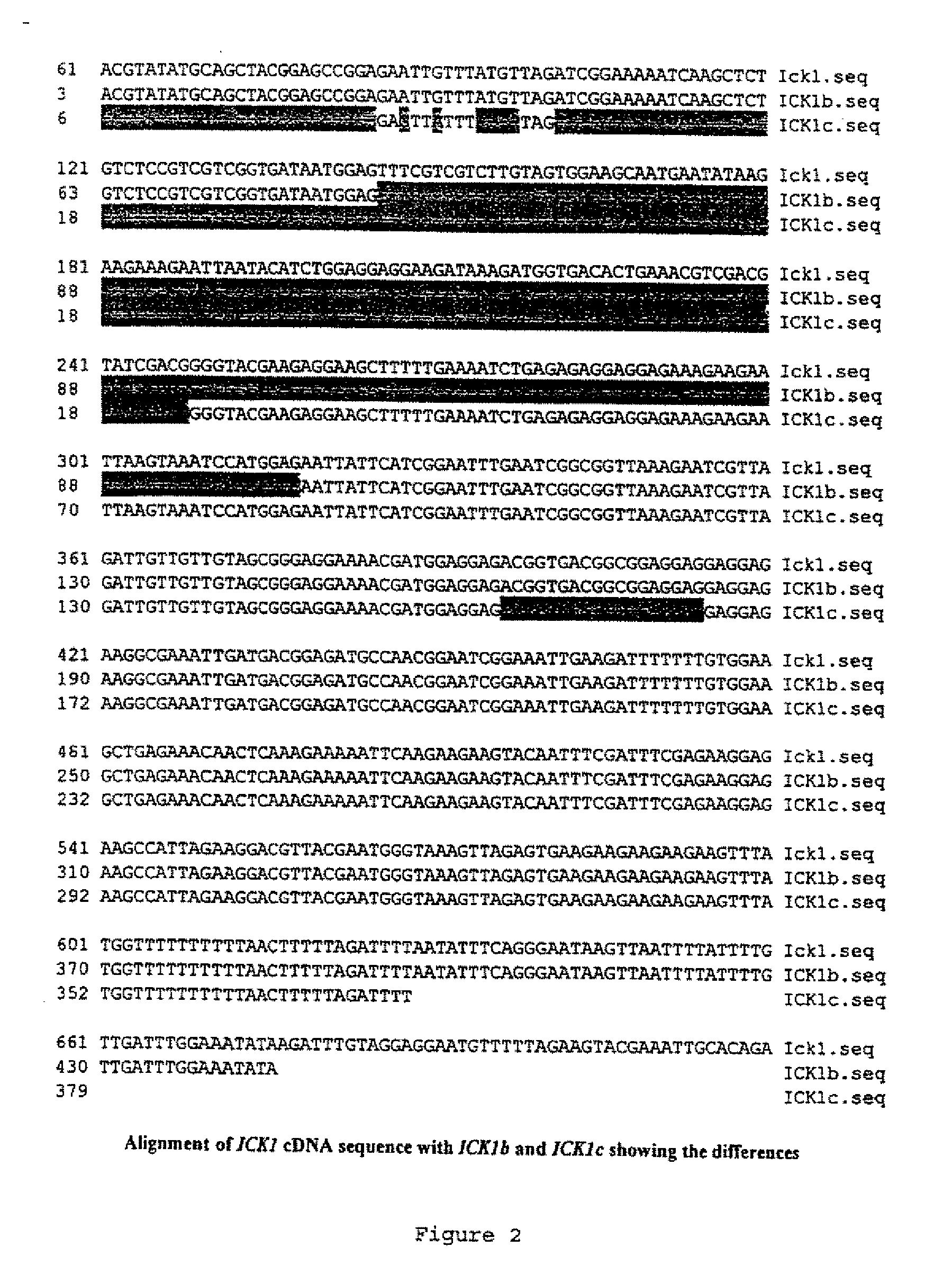Cyclin-dependent kinase inhibitors as plant growth regulators
a technology of cyclin-dependent kinase inhibitors and plant growth regulators, which is applied in the direction of peptide sources biochemistry apparatus and processes, etc., can solve the problems of body growth and mortality, aberrant tissue organization, general decrease in overall number of adult hepatocytes, etc., and achieve the effect of modifying the development of plants and modifying the development of plants
- Summary
- Abstract
- Description
- Claims
- Application Information
AI Technical Summary
Benefits of technology
Problems solved by technology
Method used
Image
Examples
Embodiment Construction
[0043] Methods are provided for modifying plant or plant cell development. In the context of the disclosure, the word ‘development’ encompasses a wide variety of biological process, including growth, morphogenesis, multiplication, enlargement, differentiation or maturation of a cell or plant. In one aspect, the methods provided herein involve transforming a plant cell with a nucleic acid encoding a cyclin-dependent kinase inhibitor polypeptide, or an anti-sense construct complementary to such a nucleic acid, to produce a transformed plant cell; and, growing the transformed plant cell, or progeny of the transformed plant cell, under conditions wherein the cyclin-dependent kinase inhibitor polypeptide, or the anti-sense construct, is expressed in the transformed plant cell or in the progeny of the transformed plant cell. A ‘CDK inhibitor polypeptide’ is any polypeptide capable of inhibiting a CDK, preferably a CDK active during development of a plant or plant cell. The growing of the ...
PUM
| Property | Measurement | Unit |
|---|---|---|
| thermal melting point | aaaaa | aaaaa |
| pH | aaaaa | aaaaa |
| concentrations | aaaaa | aaaaa |
Abstract
Description
Claims
Application Information
 Login to View More
Login to View More - R&D
- Intellectual Property
- Life Sciences
- Materials
- Tech Scout
- Unparalleled Data Quality
- Higher Quality Content
- 60% Fewer Hallucinations
Browse by: Latest US Patents, China's latest patents, Technical Efficacy Thesaurus, Application Domain, Technology Topic, Popular Technical Reports.
© 2025 PatSnap. All rights reserved.Legal|Privacy policy|Modern Slavery Act Transparency Statement|Sitemap|About US| Contact US: help@patsnap.com



